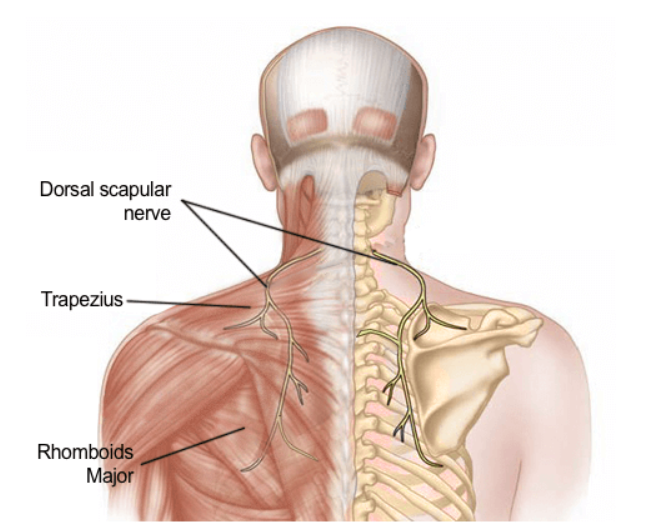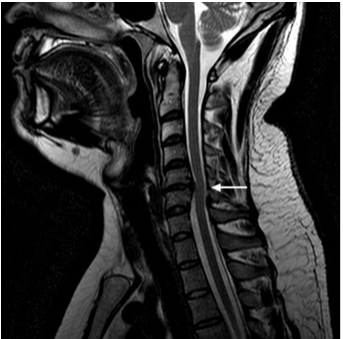🌱 Deep Chronic Rhomboid Pain (Upper Back Pain) and Disc Herniation: Understanding the Connection ✨💡
👋 Introduction
Deep chronic rhomboid pain can be a debilitating condition, impacting daily life and overall well-being. When this pain does not subside with traditional treatments, it can be frustrating and concerning. One significant cause of persistent rhomboid pain is disc herniation, which refers pain towards the rhomboid muscle. This newsletter aims to shed light on the connection between disc herniation and rhomboid pain, and explore potential treatment options.
Understanding Rhomboid Pain
The rhomboid muscles are located in the upper back, connecting the spine to the shoulder blades. They play a crucial role in stabilizing the shoulder blades and facilitating shoulder movement. Pain in the rhomboid area can stem from various factors, including muscle strain, poor posture, or overuse. However, when the pain becomes chronic and unresponsive to typical treatments like rest, physical therapy, or medication, it may indicate an underlying issue such as disc herniation.

What is Disc Herniation? 😮💥
Disc herniation occurs when the soft, gel-like center of a spinal disc pushes through a tear in the disc’s tough outer layer. This condition is commonly referred to as a slipped or ruptured disc. Herniated discs can occur anywhere along the spine, but they are most common in the lower back (lumbar spine) and the neck (cervical spine). When a herniated disc occurs in the thoracic spine (the upper and mid-back), it can exert pressure on nearby nerves, causing referred pain to the rhomboid muscles.

How Disc Herniation Causes Rhomboid Pain 👀
When a disc herniates, the displaced disc material can press against spinal nerves. If the herniation occurs in the thoracic spine, it can compress nerves that innervate the rhomboid muscles. This compression can lead to pain, tingling, or numbness radiating towards the rhomboid area. The pain may be persistent and sharp, often exacerbated by movements that involve the upper back and shoulders.
Symptoms of Rhomboid Pain Due to Disc Herniation
- Persistent, deep pain between the shoulder blades
- Pain that worsens with upper body movements
- Tingling or numbness in the upper back
- Muscle weakness or spasms in the affected area
- Difficulty maintaining good posture
Diagnosis
Diagnosing the cause of chronic rhomboid pain involves a comprehensive evaluation by a healthcare professional. This may include:
- Medical History: A detailed history of symptoms, activities, and previous treatments.
- Physical Examination: Assessing posture, range of motion, and areas of tenderness.
- Imaging Studies: MRI or CT scans to visualize the spine and identify disc herniation.
- Electromyography (EMG): Testing nerve function and identifying nerve compression.
Treatment Options
Treatment for rhomboid pain caused by disc herniation focuses on relieving pain, reducing inflammation, and addressing the underlying herniation. Options include:
- Chiropractor Care / Physical Therapy: Targeted exercises to strengthen the back and improve posture.
- Medications: Anti-inflammatory drugs, muscle relaxants, and pain relievers.
- Heat and Cold Therapy: Applying heat or cold packs to reduce pain and inflammation.
- Epidural Steroid Injections: Injections to reduce inflammation and pain around the affected nerves.
- Surgery: In severe cases, surgical intervention may be necessary to remove the herniated disc material and relieve nerve compression.
Lifestyle Modifications
In addition to medical treatments, lifestyle changes can play a significant role in managing and preventing rhomboid pain:
- Maintaining Good Posture: Avoid slouching and practice proper ergonomics.
- Regular Exercise: Strengthening the back and core muscles to support the spine.
- Healthy Weight: Maintaining a healthy weight to reduce strain on the spine.
- Ergonomic Workstations: Ensuring that workstations are set up to promote good posture.
Conclusion
Deep chronic rhomboid pain that does not subside with treatment can significantly impact quality of life. Understanding the potential connection between disc herniation and rhomboid pain is crucial for effective management. By working closely with healthcare professionals and adopting a comprehensive approach to treatment and lifestyle modifications, individuals can find relief and improve their overall well-being.
Stay Informed and Stay Healthy
For more information on managing chronic pain and other health-related topics, subscribe to our newsletter and stay updated with the latest insights and tips.
Contact Us: For any questions or to schedule a consultation, please whatsapp us😀
Disclaimer: This newsletter is for informational purposes only and should not replace professional medical advice. Always consult with a healthcare provider for any medical concerns.
